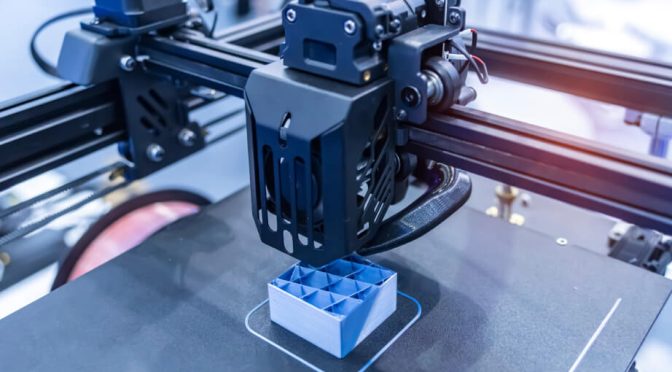Techniques for Monitoring, Debugging, and Interpreting Generative Models

Generative models have disrupted AI with applications like text generation, image synthesis, and drug discovery. However, owing to their nature, generative models will always remain complex. They are often called black boxes because they offer minimal information on their workings. Monitoring, debugging, and interpreting generative models can help instill trust, fairness, and efficacy in their operation.
This article explores various techniques for monitoring, debugging, and interpreting generative models, ensuring optimal performance and accountability.

1. Importance of Monitoring Generative Models
Monitoring generative models involves continuously assessing their behavior in real-time to ensure they function as expected. Key aspects include:
- Performance tracking: Measuring accuracy, coherence, and relevance of generated outputs.
- Bias detection: Identifying and mitigating unintended biases in model outputs.
- Security and robustness: Detecting adversarial attacks or data poisoning attempts.
The Need for Monitoring
A study released in 2023 by Stanford University showed that approximately 56% of AI failures are due to a lack of model monitoring, which leads to biased, misleading, or unsafe outputs. In addition, according to another survey by McKinsey, 78% of AI professionals believe real-time model monitoring is essential before deploying generative AI into production.
Monitoring Techniques
1.1 Automated Metrics Tracking
Tracking key metrics, such as perplexity (for text models) or Fréchet Inception Distance (FID) (for image models), helps quantify model performance.
- Perplexity: Measures how well a probability model predicts sample data. Lower perplexity indicates better performance.
- FID Score: Evaluates image generation quality by comparing the statistics of generated images with real ones.
1.2 Data Drift Detection
Generative models trained on static datasets become outdated as real-world data changes. Tools like AI, WhyLabs, etc., can further detect the distributional shift in input data.
1.3 Human-in-the-Loop (HITL) Monitoring
While automation helps, human evaluation is still crucial. Businesses like OpenAI and Google employ human annotators to assess the quality of model-generated content.
2. Debugging Generative Models
Due to their stochastic nature, debugging generative models is more complex than traditional ML models. Unlike conventional models that output predictions, generative models create entirely new data, making error tracing challenging.
Common Issues in Generative Models
IssueDescriptionDebugging Strategy
Mode Collapse: The model generates limited variations instead of diverse outputs. Adjust hyperparameters and use techniques like feature matching.
Exposure Bias: Models generate progressively worse outputs as sequences grow. Reinforcement learning (e.g., RLHF) and exposure-aware training.
Bias and Toxicity: The model produces biased, toxic, or harmful content: bias detection tools, dataset augmentation, and adversarial testing.
Overfitting: The model memorizes training data, reducing generalization, regularization, dropout, and more extensive and diverse datasets.
Debugging Strategies
2.1 Interpretable Feature Visualization
Activation maximization helps identify which features of image models, such as GANs, are prioritized. Tools like Lucid and DeepDream visualize feature importance.
2.2 Gradient-Based Analysis
Techniques like Integrated Gradients (IG) and Grad-CAM help us understand how different inputs influence model decisions.
2.3 Adversarial Testing
Developers can detect vulnerabilities by feeding adversarial examples. For instance, researchers found that GPT models are susceptible to prompt injections, causing unintended responses.
3. Interpreting Generative Models
Interpreting generative models remains one of the biggest challenges in AI research. Since these models operate on high-dimensional latent spaces, understanding their decision-making requires advanced techniques.
3.1 Latent Space Exploration
Generative models like VAEs and GANs operate within a latent space, mapping input features to complex distributions.
- Principal Component Analysis (PCA): Helps reduce dimensions for visualization.
- t-SNE & UMAP: Techniques to cluster and analyze latent space relationships.
3.2 SHAP and LIME for Generative Models
Traditional interpretability techniques, such as SHAP (Shapley Additive Explanations) and LIME (Local Interpretable Model-agnostic Explanations), can be extended to generative tasks by analyzing which input features most impact outputs.
3.3 Counterfactual Explanations
Researchers at MIT have proposed using counterfactuals for generative AI. This approach tests models with slightly altered inputs to see how outputs change. This helps identify model weaknesses.

4. Tools for Monitoring, Debugging, and Interpretation
Several open-source and enterprise-grade tools assist in analyzing generative models.
| Tool | Function |
| Weights & Biases: | Tracks training metrics, compares models, and logs errors during model development and deployment. |
| WhyLabs AI Observatory | Detects model drift and performance degradation in production environments. |
| AI Fairness 360 | Analyzes and identifies bias in model outputs to promote ethical AI practices. |
| DeepDream | Visualizes and highlights the importance of features in image generation tasks. |
| SHAP / LIME | Explain model predictions in text and image models, providing insights into decision-making logic. |
5. Future Trends in Generative Model Monitoring
5.1 Self-Healing Models
Google DeepMind researches self-healing AI, where generative models detect and correct their errors in real time.
5.2 Federated Monitoring
As generative AI expands across industries, federated learning and monitoring techniques will ensure privacy while tracking model performance across distributed systems.
5.3 Explainable AI (XAI) Innovations
XAI (Explainable AI) efforts are improving the transparency of models like GPT and Stable Diffusion, helping regulatory bodies better understand AI decisions.
Key Takeaways
Monitoring generative models is crucial for detecting bias, performance degradation, and security vulnerabilities.
Debugging generative models involves tackling mode collapse, overfitting, and unintended biases using visualization and adversarial testing.
Interpreting generative models is complex but can be improved using latent space analysis, SHAP, and counterfactual testing.
AI monitoring tools like Weights & Biases, Evidently AI, and SHAP provide valuable insights into model performance.
Future trends in self-healing AI, federated monitoring, and XAI will shape the next generation of generative AI systems.
By implementing these techniques, developers and researchers can enhance the reliability and accountability of generative models, paving the way for ethical and efficient AI systems.

Conclusion
Generative models are powerful but require robust monitoring, debugging, and interpretability techniques to ensure ethical, fair, and effective outputs. With rising AI regulations and increasing real-world applications, investing in AI observability tools and human-in-the-loop evaluations will be crucial for trustworthy AI.
As generative models evolve, staying ahead of bias detection, adversarial testing, and interpretability research will define the next frontier of AI development.
FAQ’s
How can I monitor the performance of a generative model?
Performance can be tracked using perplexity, BLEU scores, or loss functions. Logging, visualization dashboards, and human evaluations also help monitor outputs.
What are the standard debugging techniques for generative models?
Debugging involves analyzing model outputs, checking for biases, using adversarial testing, and leveraging interpretability tools like SHAP or LIME to understand decision-making.
How do I interpret the outputs of a generative model?
To understand how the model generates specific outputs, techniques include attention visualization, feature attribution, and latent space analysis.
What tools can help with monitoring and debugging generative models?
Popular tools include TensorBoard for tracking training metrics, Captum for interpretability in PyTorch, and Weights & Biases for experiment tracking and debugging.
How can [x]cube LABS help?
[x]cube has been AI native from the beginning, and we’ve been working with various versions of AI tech for over a decade. For example, we’ve been working with Bert and GPT’s developer interface even before the public release of ChatGPT.
One of our initiatives has significantly improved the OCR scan rate for a complex extraction project. We’ve also been using Gen AI for projects ranging from object recognition to prediction improvement and chat-based interfaces.
Generative AI Services from [x]cube LABS:
- Neural Search: Revolutionize your search experience with AI-powered neural search models. These models use deep neural networks and transformers to understand and anticipate user queries, providing precise, context-aware results. Say goodbye to irrelevant results and hello to efficient, intuitive searching.
- Fine-Tuned Domain LLMs: Tailor language models to your specific industry for high-quality text generation, from product descriptions to marketing copy and technical documentation. Our models are also fine-tuned for NLP tasks like sentiment analysis, entity recognition, and language understanding.
- Creative Design: Generate unique logos, graphics, and visual designs with our generative AI services based on specific inputs and preferences.
- Data Augmentation: Enhance your machine learning training data with synthetic samples that closely mirror accurate data, improving model performance and generalization.
- Natural Language Processing (NLP) Services: Handle sentiment analysis, language translation, text summarization, and question-answering systems with our AI-powered NLP services.
- Tutor Frameworks: Launch personalized courses with our plug-and-play Tutor Frameworks. These frameworks track progress and tailor educational content to each learner’s journey, making them perfect for organizational learning and development initiatives.
Interested in transforming your business with generative AI? Talk to our experts over a FREE consultation today!
![Blog-[x]cube LABS](https://d6fiz9tmzg8gn.cloudfront.net/wp-content/uploads/2016/06/blog_banner.jpg)






